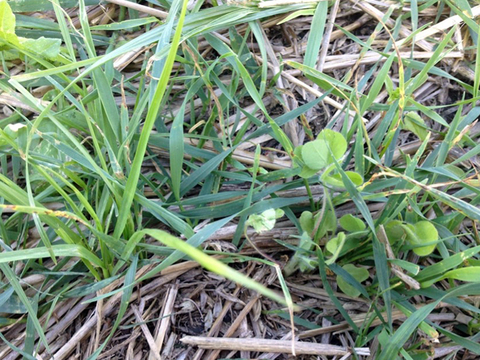A wide variety of grass and legume mixtures are adapted to Minnesota growing conditions. These mixtures are also a special challenge for fertilizer management, which should focus on maintaining both the grasses and legumes in the mixture.
Nitrogen guidelines
Nitrogen fertilizer is important for maintaining the grass component of the mixture. Excessive nitrogen will stimulate the growth of grasses, which will crowd the legumes out of the mixture. Minimum rates may allow the legumes to crowd out the grasses.
A rate of 60 pounds of nitrogen per acre is suggested for grass-legume mixtures. But a lesser rate or no nitrogen may be needed in some situations.
Grass is more likely to need nitrogen in sandy soils or in shallow topsoil with low organic matter content in the top six inches. If nitrogen is required, it should be top-dressed to the established stands in early spring.
Phosphorus and potash guidelines
Fertilizers to supply phosphate and potash are necessary to maintain the legume component of the mixture. The suggested amounts should be top-dressed to established stands in early spring.
Phosphate fertilizer guidelines*
| Expected Yield Bray-P1 Expected Yield Olsen |
0-5 ppm 0-3 ppm |
6-10 ppm 4-7 ppm |
11-15 ppm 8-11 ppm |
16-20 ppm 12-15 ppm |
21+ ppm 16+ ppm |
|---|---|---|---|---|---|
| 2 tons/acre | 35 lb/acre | 25 lb/acre | 15 lb/acre | 0 lb/acre | 0 lb/acre |
| 3 tons/acre | 55 | 40 | 25 | 10 | 0 |
| 4 tons/acre | 70 | 50 | 30 | 10 | 0 |
| 5 tons/acre | 90 | 65 | 40 | 15 | 0 |
*Pounds of P2O5 suggested to apply per acre for grass-legume mixtures production based on either the Bray-P1 or Olsen soil methods test reported in parts per million (ppm). Use one of the following equations if a P205 recommendation for a specific yield goal is desired.
- P205 Rec = [20-(1.0)(Bray P, ppm)] (Yield Goal)
- P205 Rec = [20-(1.4)(Olsen P, ppm)] (Yield Goal)
Potash fertilizer guidelines*
| Expected Yield | K: 0-40 ppm | K: 41-80 ppm | K: 81-120 ppm | K:121-160 ppm | K: 161+ ppm |
|---|---|---|---|---|---|
| 2 tons/acre | 95 lb/acre | 65 lb/acre | 40 lb/acre | 15 lb/acre | 0 lb/acre |
| 3 tons/acre | 140 | 100 | 60 | 20 | 0 |
| 4 tons/acre | 185 | 135 | 80 | 25 | 0 |
| 5 tons/acre | 230 | 165 | 100 | 35 | 0 |
*Pounds of K2O suggested to apply per acre for grass-legume mixtures production based on the ammonium acetate potassium (K) test reported in parts per million (ppm). Use the following equation if a K2O recommendation for a specific soil test value and a specific yield goal is desired.
- K2O Rec = [51.2-0.299 (K Soil Test, ppm)] (Yield Goal).
Other nutrient needs
Sulfur is an important addition to a fertilizer program if alfalfa and red clover are the legumes included in the mixture. An annual application of 10-25 pounds of sulfur per acre is suggested if the legumes are grown on sandy soils.
Use of other nutrients has not increased dry matter production of grasses and legumes used in the various mixtures. So the use of other nutrients is not suggested at this time.
Liming considerations
Maintaining a favorable soil pH is one key to maintaining legumes, especially alfalfa. The suggested rate of lime should be broadcast and incorporated before the legumes are seeded.
Lime will not maintain soil pH in the favorable range forever. When pH values drop into the acid range, alfalfa will probably disappear when it is mixed with grasses. Reseeding can be expensive and unless lime is incorporated, there is no way to reseed alfalfa to get a high yielding stand.
Pay special attention to legumes other than alfalfa for soils where acid pH values are a problem. Some forage legumes are more tolerant than alfalfa to pH values in the acid range.
Reviewed in 2023


